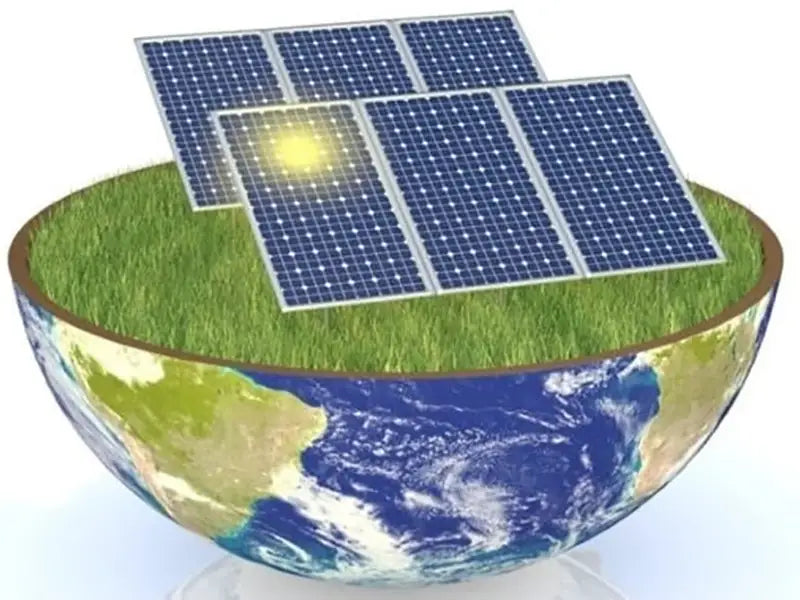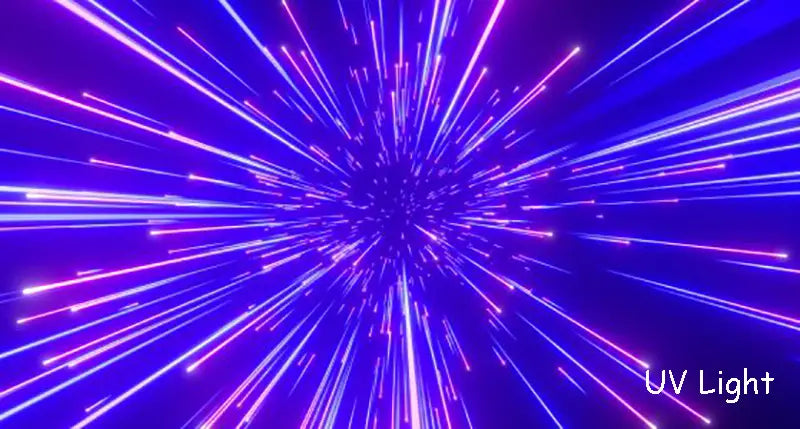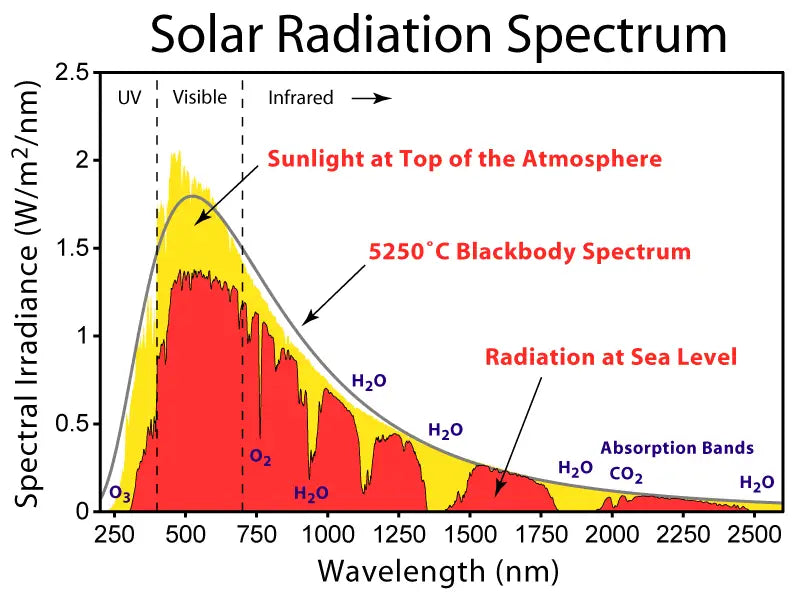
Main content:
1. How to transmit solar energy
Solar energy is the primary source of light and heat on Earth. The sun does not stop for a moment to send its enormous energy continuously to the earth. How is solar energy transmitted?
There are three forms of heat transfer, conduction, convection and radiation. Solar energy spreads its heat and particles in the form of radiation to the vast expanse of the universe. The process of solar radiation is called solar radiation. Solar radiation is not only the fundamental way for the earth to obtain heat, but also the factor that has the most important impact on the survival activities of human beings and all other living things and the change of the earth's climate.
The total radiant energy of solar energy is about 3.75× 1026T, which is extremely huge. But about one in 2.2 billion of that solar energy reaches Earth. The solar energy reaching the earth is about 1.73×1014kJ. Among them, the solar energy absorbed by the atmosphere is about 3.97 × 1013 kJ, accounting for about 23% of the total solar energy reaching the earth; the solar energy reflected back to space by atmospheric molecules and dust particles is about 5.2× 1013 kJ , accounting for about 30%; the solar energy reaching the earth's surface through the atmosphere is about 8.1×1013 kJ, accounting for about 47%. Among the solar energy reaching the earth's surface, the solar energy reaching the earth's land surface is about 1.7×1013 kJ, which is about 10% of the solar energy reaching the earth's range. What order of magnitude is this1.7×1013 kJ reaching the earth’s land surface? Figuratively speaking, it is equivalent to more than 30 million times the total energy generated by the various energy sources consumed by the entire world in one year. In this part of the solar energy received on the land surface, only 0.015% is absorbed by plants, and only 0.002% is used by people as fuel and food, and the proportion that has been used is very small. It can be seen that the potential of using solar energy is quite large, and it is very promising to develop and utilize solar energy to serve human beings.

2. The spectrum of solar energy
The sun transmits energy to the surface of the earth in the form of light radiation. What we call the use of solar energy is to use the energy of the sun's rays, so what is the nature of the sun's rays and what are its characteristics?
Modern physics believes that all kinds of light, including sunlight, are a form of existence of matter. Light has both wave and particle properties, which is called the wave-particle duality of light. On the one hand, any kind of light is an electromagnetic wave of a certain frequency or frequency range, which is essentially no different from ordinary radio waves, except that its frequency is relatively high and its wavelength is relatively short. For example, the frequency of white light in solar light is at least ten thousand times higher than that of radio waves in the centimeter band. Therefore, no matter what kind of light, it can produce the phenomena of reflection, refraction, diffraction, and coherence. Therefore, we usually call light "light wave". On the other hand, the light emitted by any matter is a stream of particles composed of discrete, moving particles with mass and energy. These particles are so tiny that they cannot be seen even with the most powerful electron microscopes in modern times. These microscopic particles are called photons or photons, and they have a specific frequency or wavelength. The energy of a single photon is extremely small and is the smallest unit of solar energy. However, even in the faintest light the number of days of photons is very large. In this way, the concentration can generate energy that people can feel. Scientific research has shown that photons or rays of different frequencies or wavelengths have different energies, and the higher the frequency of photons, the greater the solar energy.
The sunlight that our eyes can see, called visible light, is white. But scientific practice has proved that it is not a monochromatic light, but consists of red, orange, yellow, green, blue and blue. The light composed of seven colors of purple is a complex color light. Each color of light has its own frequency range. Usually we arrange the light band diagram of the various colors of solar light in the order of frequency or wavelength, which is called the spectrum of solar energy.

Solar energy not only emits visible light, but also emits a lot of light that is invisible to the human eye. The wavelength range of visible light is only a small fraction of the entire solar energy spectrum. The entire solar energy spectrum includes three parts: ultraviolet region, visible region and infrared region. However, its main part, that is, the backbone part with strong energy, is composed of light with a wavelength of 0.30 to 3.00 μm. Among them, the ultraviolet region with wavelength less than 0.4 μm and the infrared region with wavelength greater than 0.76 μm are invisible to the human eye. The ultraviolet and infrared rays; the visible region with a wavelength of 0.40~0.76μm is what we see as white light. In the solar energy radiation reaching the ground, the light in the ultraviolet region accounts for a small proportion, about 6%; mainly the light in the visible region and the infrared region, accounting for 50% and 43% respectively.
Different wavelengths of light in solar light have different energies. Light with maximum energy at the outer surface of the Earth's atmosphere has a wavelength of about 0.48 μm. However, on the ground, due to the existence of the atmosphere, the ultraviolet and infrared rays are more absorbed by the atmosphere when the solar energy radiation passes through the atmosphere, and the ultraviolet and visible areas are scattered more by particles such as atmospheric molecules and clouds, and the distribution of solar energy with wavelength is more complicated. Now, the general situation is: during the sunny day, when the sun is four or five hours before and after noon, the maximum solar light is the green light and the yellow light part; and in the morning and evening, the maximum solar light is is the red part. It can be seen that the light with the most solar energy on the ground has a longer wavelength than the light with the most energy on the outer surface of the atmosphere.

In the solar energy spectrum, different wavelengths of light have different effects on substances and their ability to penetrate objects. Ultraviolet light is very active, it can produce strong chemical effects, biological effects and excitation fluorescence, etc.; while infrared rays are very inactive and mainly cause thermal effects after being absorbed by objects; as for visible light, because of its wide frequency range, it can play a role in sterilizing biological It can also be converted into heat after being absorbed by objects. The growth of plants mainly depends on the absorption of visible light from solar energy. A large number of solar ultraviolet rays with wavelengths shorter than 0.30μm are harmful to plants. Solar infrared rays with wavelengths exceeding 0.8μm can only increase the temperature of plants and accelerate the evaporation of water, but cannot cause photochemical reactions. . The effect of sunlight on human skin is mainly manifested in the formation of erythema and burns, which are mainly caused by solar ultraviolet rays with a wavelength shorter than 0.38m; while the solar rays with a wavelength of 0.30~0.45μm are mainly used to synthesize fat on the skin surface into photosynthesis. Vitamin D3 that prevents rickets and causes dark skin.
Light travels very fast. It takes only 8 minutes and 19 seconds for the solar energy radiation far away from 1. 5× 108 km to propagate to the ground. The most accurate light speed obtained by experiments so far is 299792.4562 km/s, which is usually taken as 3.010 km/s.
3. Solar energy spectral irradiance and its characteristics

Utilizing solar energy is the use of energy generated by solar radiation. Then, how to measure the size of solar energy, what factors affect the amount of solar energy reaching the earth's surface, and what are the characteristics of solar energy? This is a fundamental question that we must understand in understanding and utilizing solar energy.
Solar spectral irradiance refers to the solar spectral irradiance of the power emitted by the sun in the form of radiation and projected onto a unit area of the earth's surface. It can be divided into constant radiation and There are two types of anomalous radiation. Steady radiation includes three wavelength bands of visible light, near-ultraviolet and near-infrared, and is the main part of solar light radiation. Solar light radiation is characterized by large and stable energy, its radiation accounts for about 90% of the total solar energy, and is little affected by solar activity. The physical quantity that expresses this irradiance is called the solar constant. Anomalous radiation includes the radio wave part, the ultraviolet part and the particle stream part of the optical radiation. Its characteristic is that it changes drastically with the intensity of solar activity, the energy is very large in the maximum period, and the energy is very weak in the minimum period.
Read more: Application of virtual prototype technology in flywheel energy storage design
















